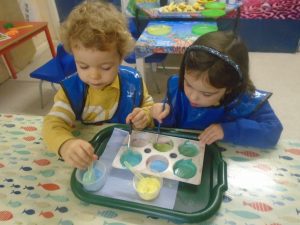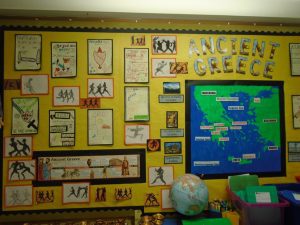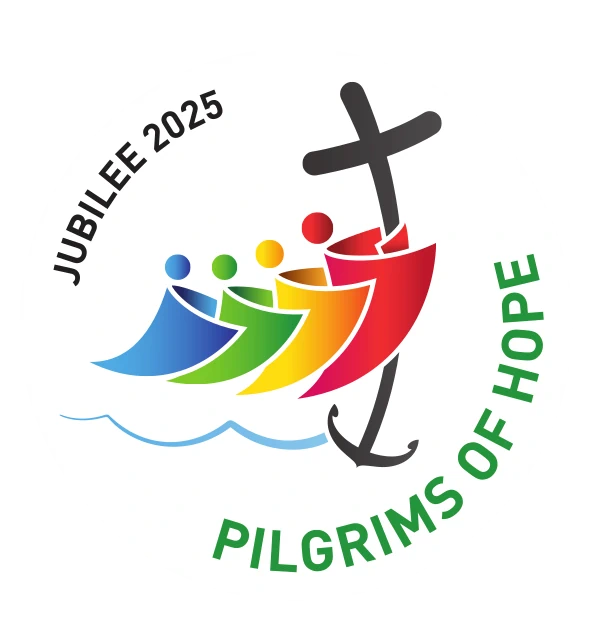Aims and Objectives
Art, craft and design embody some of the highest forms of human creativity and expression. At St Mary’s we believe that a high quality art and design education should engage, inspire and challenge pupils, equipping them with the knowledge and skills to experiment, invent and create their own works of art, craft and design. As pupils progress, they should be able to think critically and develop a more rigorous understanding of art and design. They should also know how art and design both reflect and shape our history, and contribute to the culture, creativity and identity of our nation.
Using the national curriculum for Art and Design as a starting point, at St. Mary’s Catholic Voluntary academy we aim to ensure that all pupils:
- Achieve proficiency in drawing, painting, sculpture and other art, craft and design techniques.
- Have the ability to explore and invent marks, develop and deconstruct ideas and communicate through purposeful drawing in 2D, 3D or digital media.
- Produce creative work, exploring their ideas and recording their experiences.
- Evaluate and analyse creative works using the language of art, craft and design
- Know about great artists, craft makers and designers, and understand the historical and cultural development of their art forms.
How the Subject is Planned
The National Curriculum serves as the basis for our planning in Art and Design; we also aim to promote creativity amongst our children and an appreciation of a diverse range of artists, craftspeople and architects.
Foundation Stage
Children in the Foundation Stage learn in a holistic way and should experience a balance of child-initiated and adult directed art and design. Children are given opportunities to explore their own ideas, make links and test their ideas, review and modify their work and find new ways to do things. These experiences enable young children to develop an understanding of what art is, stimulating curiosity and interest and an experiential approach to art and design.
Key Stage One and Two
See whole school overview document for overview of units of work and topics covered in Key Stages One and Two.
Teaching Approaches
The teaching of Art and Design is bases on sensory experiences and encouraging children to express their own ideas creatively.
Opportunities are made for pupils to:
- Respond to a variety of visual stimuli or pieces of art, design or architecture.
- Develop a knowledge of the formal elements of art: colour, form, line, shape, texture, tone and pattern.
- Undertake activities which promote different approaches and ways of thinking.
- Develop their ideas in a creative way, using sketchbooks in KS2 to develop ideas and experiment processes.
- Understand what it takes to persevere and develop ideas from an original starting point.
- Discover their own aptitudes and preferences through an exploration of different artistic media.
Role of the Subject Leader
The Subject leader has a variety of roles. These include:
- Taking the lead in policy development and quality assuring Art planning, delivery and assessment.
- Supporting colleagues in their development and implementation of Art.
- Monitoring progress in Art and advising the Senior Leadership Team and Governors on action needed.
- Using release time to support colleagues and disseminate information.
- Auditing and gathering resources, where appropriate.
- Keeping up-to-date through research and continuing professional development and attendance at
- Art co-ordinators meeting.
- Monitors and evaluates practices in school.
Resources
Art materials and artefacts are stored centrally in the art cupboard, in each classroom, usually underneath the class sink. It is important to ensure that resources are tidy and clean and ready for use. The internet is also an invaluable resource for artist’s work with major museums and galleries having websites that capture the interest of our children
Cross-Curricular
Staff are encouraged to develop cross-curricular links with Art and Design and other subjects to provide a relevant and meaningful curriculum for pupils, for example Year 5 make historical links with the Ancient Greeks and their intricately detailed pottery.
Links to Community, Locality and Trip
Where possible, we seek to utilise the wealth of local galleries and museums, such as Manchester Art Gallery, the Lowry and the Hat Works museum as they all offer excellent learning opportunities. Artists and craftspeople from the local community can also enhance and contribute to topics eg through assemblies, interviews and workshops.



